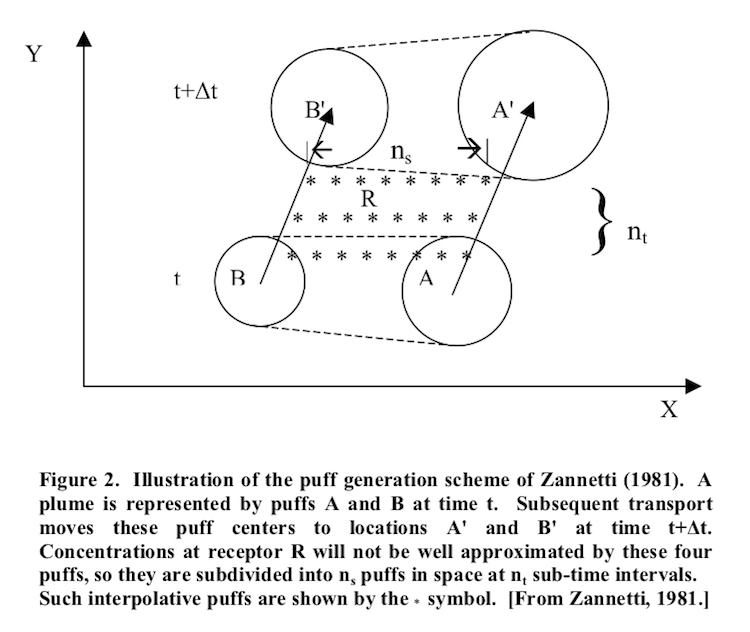Gaussian Models - Puff Advanced

Reading Guide
Since the 1980s, Gaussian puff models have provided an interesting and cost-effective approach, which maintains the basic Gaussian plume formulation, but allows dynamic, instead of steady state, simulations and permits the incorporation of three-dimensional meteorological inputs.
Today, the most used puff model is the CALPUFF Modeling System. This program can make full use of the 3D information provided by the Fifth Generation Mesoscale Model (MM5, version 3) and the Weather Research and Forecasting (WRF) model (Advanced Research WRF [ARW] core, versions 2 and 3). In fact, the Mesoscale Model Interface Program (MMIF) converts prognostic meteorological model output fields to the parameters and formats required for direct input into CALPUFF.
A review chapter on puff modeling (Yamartino, 2008) from the book Air Quality Modeling - Theories, Methodologies, Computational Methods, and Available Databases and Software, Vol III (Zannetti, Ed. 2008) is included as pdf file.
Material
Guide prepared by P. Zannetti (9/2020). For corrections or expansions please contact us.